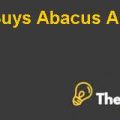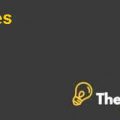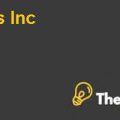
Chestnut Food Case Solution
Why is Van Muur imploring control of Chestnut?
In 1887, Chestnut foods was founded by Otto Chestnut, Otto Chestnut was 22 years old at the time when he founded the company.He opened a bakery that made lye rolls and pretzels. The company was growing sufficiently,the reason for this is that he was focusing more focusing on the quality and hygiene of food so the customers and investors become more attracted to the company’s product and it enhanced the profit of the company.In 2013, the profit of the company grew more than $130 million. In addition to this, the CFO the company planned to expand the business by purchasing V&M. In 1979, the company when going public for the first time and started selling its shares in the market,its shares were very attractive for investors because the company was going well and had more growth opportunities.Thus, investors thought that share price in the future would increase more when the company achieve sits growth.
Chestnut has two main business segments; one is food product and the other is instrument.
Food Product segment:
In the food product division, the company is offering awide range of the prepackaged and frozen products related to the bread and sandwich. The revenue of this segment was stable, and it grew by 2% in 2013. Thismeans that customers are the more satisfied with the quality of the product, which Chestnut Foodsis offering. The net operating profit and the net assets of this segment were $88 million and $1.4 billion respectively.
The CFO wants to expand into another market, which will increase the sale and profitability of the company. After Chestnut went public, the company has put more focus on the product innovation and enhanced its product line by selling more food products like cookeries and health-conscious snacks,this increased the profit of the company.The competition in the industry has increased. However,Chestnut Foods can become the market leader by offering product quality, freshness, and flavor.
Instrument segment:
Chestnut’s management offers the technology to the active flour mills and rail lines of Minneapolis, which improve quality and increase the efficiency across the production process. The company is getting 80% of revenue from this division and 20% from the product food division. The sale of the instrumental division increased by 20% in 2013, net profit margin and net assets were $$46 million and $600 million respectively.
In the early 2014, stock performance of the Chestnut Food was the poor. The stock was selling in the market at a lower rate, the CFO of the company wants to sustain corporate growth opportunity by raising $1 Billion to invest in the expansion of the instruments division, since this division has maintained a strong market interest for the high-valued added offering. During this period, Rollo van Muur was the high profile activist investor, he purchased 10% of the company shares and sought for the seats in Board of Directors of the company. Van Muur requested to acquire seats in order to put pressure on other board members so that they show receptivity to his suggestion of selling the instrument division in order to divert focus of the management on the foundation division of Chestnut Foods...................
This is just a sample partial case solution. Please place the order on the website to order your own originally done case solution.









